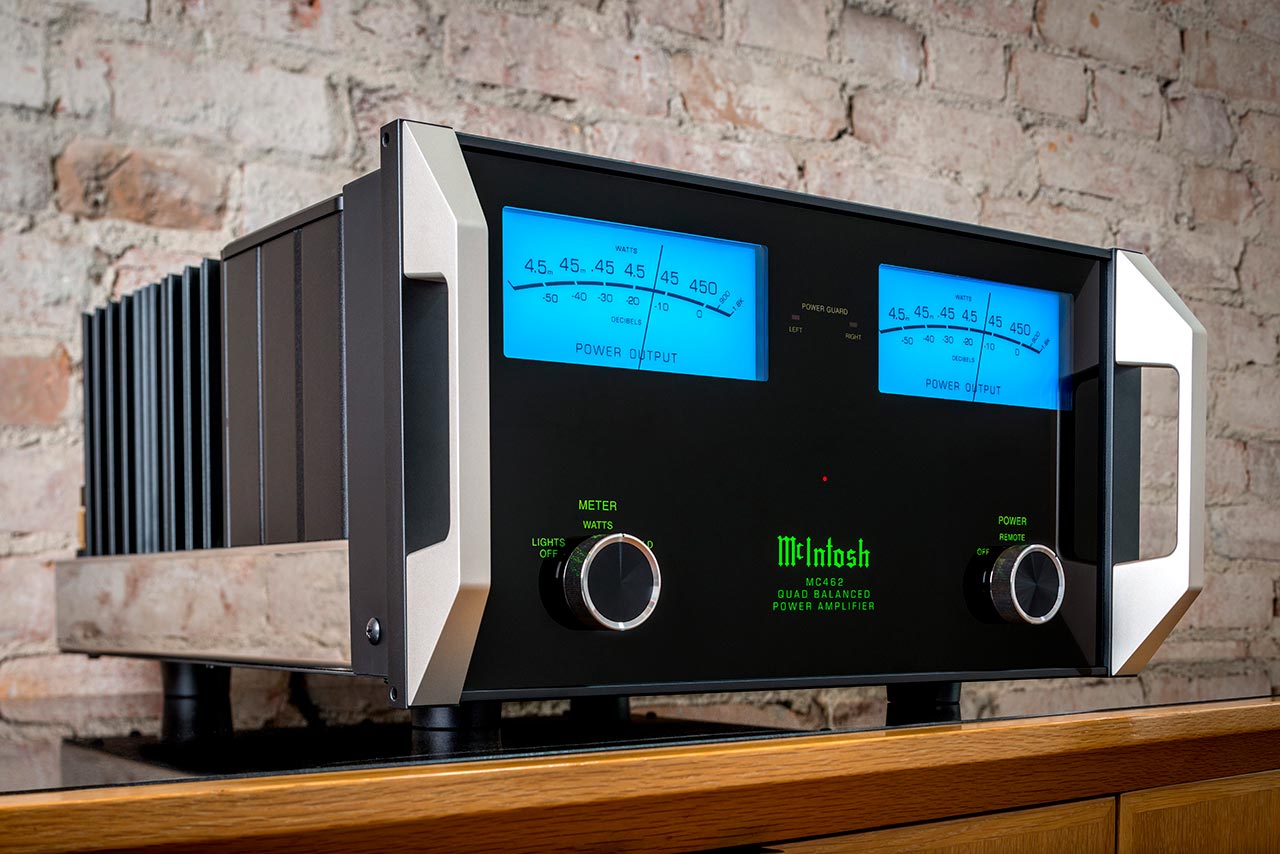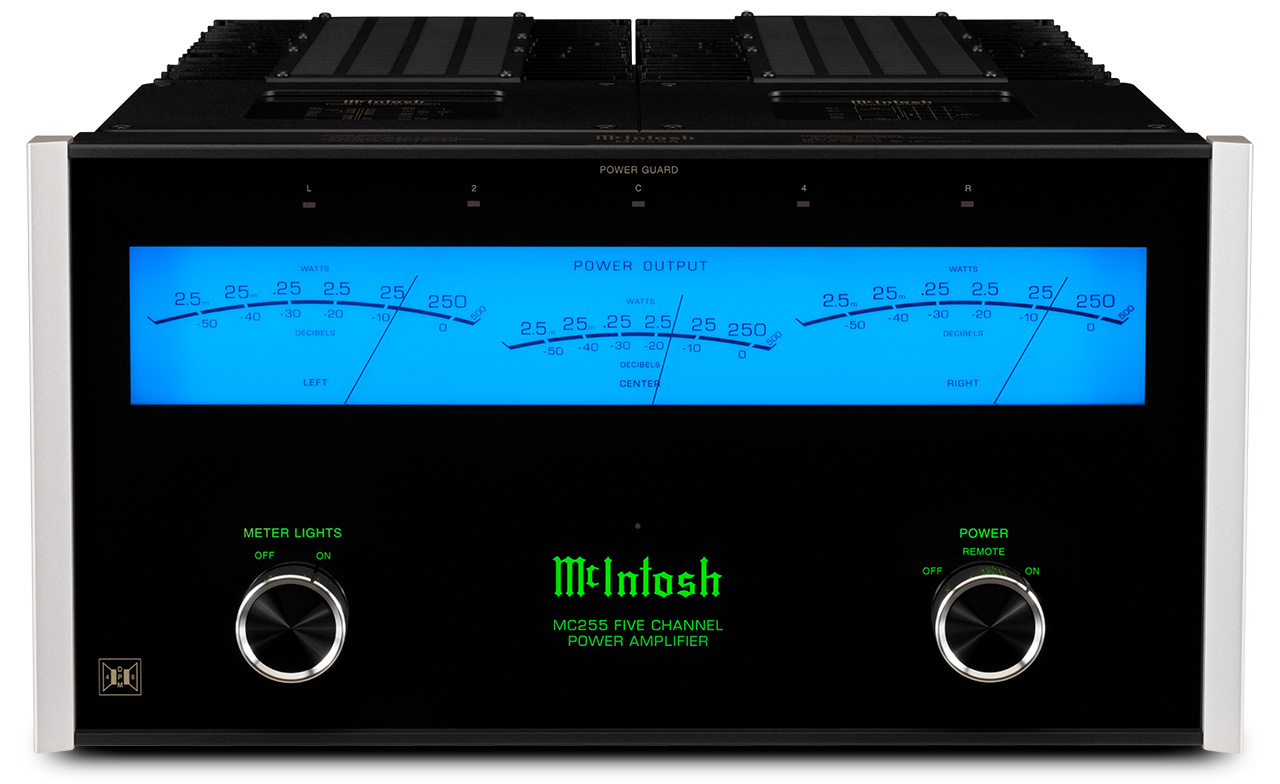Key Factors to Consider When Purchasing Your First Amplifier

The McIntosh MC462 Amplifier. The MC462 is a stereo amplifier that can output up to 450 watts per channel.
Purchasing your first amplifier for your sound system comes with a myriad of considerations. For many first-time amplifier buyers, the shopping experience can be confusing, if not overwhelming.
We’ve built a checklist of essential factors to consider when acquiring your first amplifier. This amplifier buying guide will help you cut through the noise and find the ideal amplifier for your use case, factoring in power needs, channels, and other critical features.
Essential Factors to Consider When Buying Your First Amplifier
Amplifier Power Needs
Your amplifier of choice needs to have enough power to drive your chosen speakers effectively. To ensure maximum longevity of your amplifier choice, we recommend buying as much power as you can comfortably afford. Depending on the size of your space and specs of your speakers, you might not need to push your amplifier to its upper limits with your current setup. However, having a wide breadth of power makes your amplifier more flexible for potential future upgrades to bigger speakers or a bigger space. Almost all loudspeakers sound better with a larger amplifier, so if you invest in a powerful amplifier, you can enjoy its supplied power and sound output for life.
Number of Amplifier Channels
You can think of “channels” as the number of speakers you want to connect to your amplifier. A single-channel amplifier, otherwise referred to as a monoblock, is designed to power a single speaker. For music, the majority of listeners will opt for two channels, otherwise known as stereo. Stereo sound gives your music more nuance, since the sound is spread across the left and right channels.
For TV, home cinema, or other surround sound applications, you’ll need more channels to account for other sound sources. In 5.1 surround sound setups, for instance, speakers are placed at front left, front right, center, rear left, and rear right in relation to the listener, alongside a subwoofer. You’ll need to have enough channels in your amplifier to support the number of speakers in the system.

The McIntosh MC255 Amplifier. The MC255 can power five speakers in a home theater.
Speaker Compatibility
Make sure that your amplifier is compatible with your speaker in terms of power handling capabilities and impedance. Most speakers will list their rated power rating in watts. This will usually be in a range comprised of a lower number and a higher number, for example: 75 – 300 watts. For this example speaker, it would need at least 75 watts to make it sound its best, but it should be powered by no more than 300 watts or else the speaker could be damaged. Any wattage in between would be fine.
Another key specification to keep in mind is impedance rating. Impedance in speakers refers to the resistance a speaker gives to the electrical signal coming from an amplifier. Impedance measured in ohms (Ω). Most common speakers have an impedance of 4 or 8 ohms. If the impedance of the speakers is lower than the amplifier’s impedance, the amplifier may overwork or overheat which could damage it. On the other hand, if the speaker impedance is higher than the amplifiers, then the amplifier may not be able to output as much power as it is rated to produce. In this case, you would not be utilizing your amplifier to its fullest capabilities and are not getting your full money’s worth from it.

The McIntosh ML1 Loudspeakers have an impedance of 8 ohms and are engineered to handle up to 600 watts.
McIntosh amplifiers have various built-in technologies, such as our output Autoformer™, Unity Coupled Circuit Output Transformer, or Dynamic Power Manager® to match their impedance with your speakers’ impedance, so you are able to use and enjoy all the power you paid for. Matching speaker and amplifier impedance protects your equipment, maximizes amplifier power output, and ensures the best audio quality.
Audio Quality
To ensure top-notch audio quality, amplifier contenders should be tested for pristine sound reproduction without distortion, particularly at higher volumes. If possible, seek out a location or dealer showroom where you can test out your amplifier of choice in person. You’ll want to opt for a high signal-to-noise ratio (SNR) and low total harmonic distortion (THD) levels.
All amplifiers produce some background noise. If the fine details in a musical passage are lower in level than the noise of a given amplifier, those details will be masked and lost by the noise. Signal to noise ratio (SNR) is a measurement of the noise in an amplifier. The higher the SNR number the lower the noise. Similarly, Total Harmonic Distortion (THD) measures how much a signal is distorted when it passes through an audio system. The lower the THD, the higher the sound quality will be. Most McIntosh amplifiers have a THD from 0.05% - 0.005%, which means they produce virtually no distortion.
Additional Features and Connectivity
You should consider which audio formats you will use and how your amplifier can support these different options. This can include Bluetooth or wireless connectivity for streaming, HDMI input for connecting to a TV, or phono inputs for connecting a turntable. Some integrated amplifiers come with built-in environmental equalizers, while others will require the EQ to be purchased separately. An EQ will help you get the most of your audio sources and room acoustics by adjusting the sound to your specific space.

The McIntosh MA12000 Integrated Amplifier features a built-in 8-band analog equalizer (EQ) that allows for making adjustments to 8 audio frequencies in the 25Hz to the 10kHz frequency range.
Future Expansion
Remember that your current and future sound system is modular, meaning that parts are interchangeable. If you know you’re going to upgrade your speakers in the future, opt for a more powerful amplifier that can support more power-hungry speakers to increase the longevity of your components.
Product Warranty
An amplifier warranty can tell you a lot about the quality of the product. Check the warranty policy and general support resources provided by the amplifier manufacturer to ensure you can receive service in the event that your amplifier needs repairs. McIntosh offers a 3 year warranty in the US on most amplifier models. (International warranty policies will vary by country). Also consider the history and age of the amplifier manufacturer. Look for one that has been around for a very long time as that would be a good indication that they make quality products. As an example, founded in 1949, McIntosh is one of the oldest manufacturers of home audio amplifiers in the world.
Installation Needs
Some amplifiers may require specialized service for installation in your home. Look for knowledgeable, authorized dealers who can recommend the right components and professionally install them in your space.
Selecting an amplifier is one of the most important choices when building your home audio system. When choosing the right amplifier, you will need to think about both your current and future needs to ensure the longevity of your components. Working with an authorized dealer can help you make the right choice for your home audio set-up.
